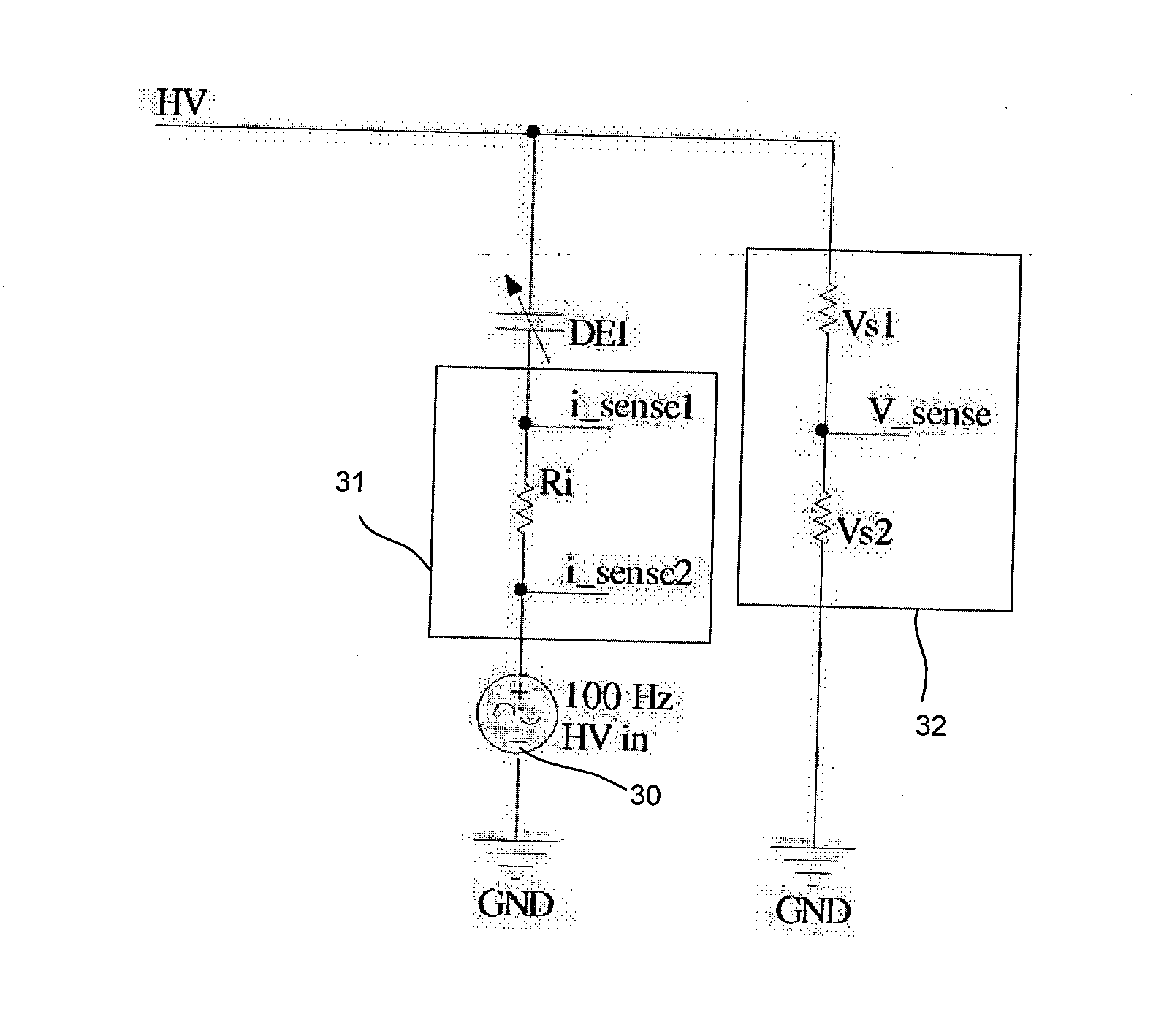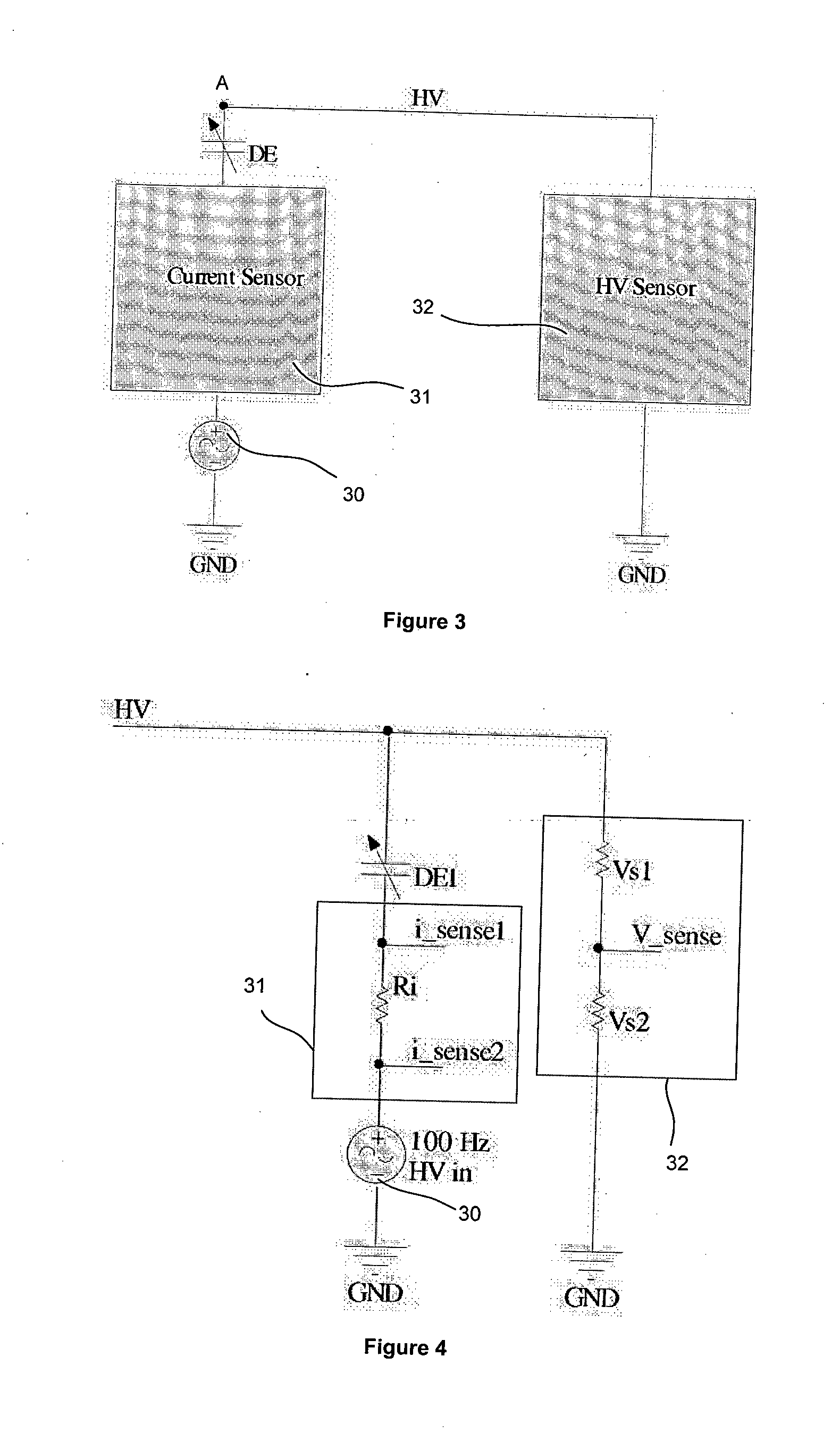Self-sensing dielectric elastomer device
- Summary
- Abstract
- Description
- Claims
- Application Information
AI Technical Summary
Benefits of technology
Problems solved by technology
Method used
Image
Examples
Example
[0090]FIG. 3 a block diagram of a first embodiment of a self-sensing dielectric elastomer device circuit according to the present invention;
[0091]FIG. 4 is a schematic of the circuit of FIG. 3;
Example
[0092]FIG. 5 is a block diagram of a second embodiment of a self-sensing dielectric elastomer device according to the present invention;
[0093]FIG. 6 is a block diagram of a dielectric elastomer generator system incorporating the circuit of FIG. 5;
[0094]FIG. 7 is a schematic of the system of FIG. 6;
[0095]FIG. 8 shows simulated and estimated capacitance waveforms of the DED in the system of FIG. 7;
[0096]FIG. 9 shows a simulated output voltage waveform of the DED in the system of FIG. 7;
Example
[0097]FIG. 10 is a block diagram of a third embodiment of a self-sensing dielectric elastomer device circuit according to the present invention;
PUM
 Login to View More
Login to View More Abstract
Description
Claims
Application Information
 Login to View More
Login to View More - R&D
- Intellectual Property
- Life Sciences
- Materials
- Tech Scout
- Unparalleled Data Quality
- Higher Quality Content
- 60% Fewer Hallucinations
Browse by: Latest US Patents, China's latest patents, Technical Efficacy Thesaurus, Application Domain, Technology Topic, Popular Technical Reports.
© 2025 PatSnap. All rights reserved.Legal|Privacy policy|Modern Slavery Act Transparency Statement|Sitemap|About US| Contact US: help@patsnap.com



